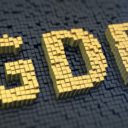
Gains in Workers’ Wages and Compensation Offset By Losses for Interest Earners
The Bureau of Economic Analysis (BEA) reported personal income gains slowed to 0.1% in July, below the consensus forecast. Wages and salaries, the largest component of personal income, rose 0.2% in July after gaining 0.5% in June.
| Prior | Revised | Consensus Forecast | Forecast Range | Actual | |
| Personal Income – M/M ∆ | 0.4% | 0.5% | 0.3% | 0.1% to 0.4% | 0.1% |
| Consumer Spending – M/M ∆ | 0.3% | 0.5% | 0.3% to 0.6% | 0.6% | |
| PCE Price Index M/M ∆ | 0.1% | 0.2% | 0.2% to 0.3% | 0.2% | |
| Core PCE Price Index – M/M ∆ | 0.2% | 0.2% | 0.1% to 0.3% | 0.2% | |
| PCE Price Index Y/Y ∆ | 1.4% | 1.3% | 1.5% | 1.4% to 1.5% | 1.4% |
| Core PCE Price Index – Yr/Yr ∆ | 1.6% | 1.7% | 1.6% to 1.7% | 1.6% |
Personal income rose 0.4% in both June and May. Wages and salaries gained 0.2% in May.
Worth noting, the slowing in the increase in personal income for July was driven by decreases in personal interest income offsetting increases in compensation of employees and government social benefits.
Put plainly, more wealthy interest earners offset rises in workers wages and benefits.
Disposable personal income (DPI) rose by $44.4 billion (0.3%) and personal consumption expenditures (PCE) gained $93.1 billion (0.6%). Real DPI rose 0.1% in July and Real PCE gained 0.4%.
The PCE price index increased by 0.2%. Excluding food and energy, the PCE price index increased 0.2%.
Personal outlays rose $96.4 billion.
Personal saving came in at $1.27 trillion in July and the personal saving rate — which is personal saving as a percentage of disposable personal income — was still a solid 7.7%.
Americans are spending and saving.





